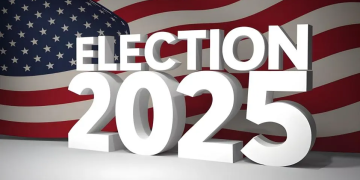When policy winds shift with little warning, markets lose their compass—and investors often lose their nerve. Whether it’s the Federal Reserve’s sudden change of tone, a surprise stimulus bill, or an unexpected tax hike proposal, policy unpredictability injects a level of volatility into the markets that even seasoned professionals find disorienting. In 2025, the investing environment has become a minefield of mixed signals: disinflation trends clash with wage growth, central banks walk a tightrope between credibility and flexibility, and geopolitical tensions reshape trade and fiscal priorities overnight. So how do you build and protect your portfolio in this fog of fiscal and monetary uncertainty? The answer isn’t panic or paralysis—it’s precision. The key lies in smart asset allocation, diversified exposure, and layered hedging that adapts as uncertainty unfolds.
The Nature of Policy Uncertainty—and Why It Matters Now
Economic policy uncertainty (EPU) is not a theoretical concept—it’s measurable, impactful, and increasingly frequent. Policy shifts can be monetary (think rate hikes or changes in quantitative easing), fiscal (spending programs, tax reforms), or regulatory (environmental laws, tech crackdowns). Each of these can ripple through markets, affecting valuations, credit conditions, and capital flows. What makes 2025 particularly challenging is that the traditional frameworks investors have relied on—such as predictable interest rate cycles or partisan fiscal behavior—have broken down. Policymakers are reacting to real-time data, political pressures, and global shocks, making their next move harder to anticipate.
Moreover, policy uncertainty hits investors on two levels. First, it clouds forecasting models—making it harder to assign probabilities to outcomes. Second, it amplifies volatility—creating short-term dislocations that can rattle even well-constructed portfolios. In this environment, tactical agility becomes just as important as strategic planning.
Diversification: Your First Line of Defense
When the future is murky, the last thing you want is a one-dimensional portfolio. Diversification remains the most reliable risk-mitigation tool, but in a policy-volatile world, it needs to be redefined. It’s no longer enough to own a mix of stocks and bonds. Investors should think in terms of diversification across:
Asset classes: Equity, fixed income, real assets (real estate, commodities), and cash equivalents. Each reacts differently to policy shifts. For example, when interest rates spike due to aggressive Fed tightening, growth equities suffer while short-duration bonds and value stocks may hold up.
Geographies: Don’t bet your entire portfolio on one central bank’s predictability. U.S. monetary policy may lean hawkish, while Europe or Japan could be more accommodative. Geographic diversification allows you to benefit from policy divergence.
Sectors: Policy uncertainty rarely hits all sectors equally. Healthcare, utilities, and consumer staples tend to be more resilient in times of fiscal tightening or monetary volatility. Tech and discretionary sectors, which rely on future earnings and loose credit, are more exposed.
Currencies: A strong dollar driven by hawkish Fed moves can dent overseas revenues for U.S. companies, but boost purchasing power for international investments. Holding assets denominated in different currencies can cushion those impacts.
Importantly, diversification should not be confused with dilution. Owning a bit of everything is not the goal. Instead, you want differentiated exposures that respond uniquely to policy developments. Backtesting portfolio sensitivity to rate changes, inflation surprises, and fiscal shifts can help identify true diversifiers.
Strategic Asset Allocation: The Core vs. the Tactical
In uncertain times, many investors make the mistake of going “all in” on what they think the next policy move will be—betting everything on rate cuts, stimulus packages, or tax hikes. This often leads to overexposure and underperformance. The better approach is to separate your portfolio into strategic core and tactical satellite allocations.
Your strategic core—roughly 70–80% of your portfolio—should be built for resilience, not prediction. This includes broad-based equity funds, quality bonds, and real assets that preserve long-term purchasing power. Think of it as your anchor.
The tactical satellite—20–30%—can be used to express views on policy direction. For example, if you anticipate fiscal tightening and a Fed pause, you might tilt toward defensives, gold, or short-duration bonds. If you expect a surprise stimulus or regulatory easing, small-cap equities or high-beta tech might be appropriate.
This two-speed approach gives you the flexibility to respond to policy news without compromising your long-term goals.

Hedging for Policy Surprise: Beyond Gold and Bonds
Hedging is about insuring against tail risks, and policy surprises are one of the biggest. In the past, hedges were often synonymous with gold or long-duration Treasuries. While these still have a place, 2025 requires a broader hedging toolkit.
Options and volatility products: Buying puts on major indices or using VIX-linked ETFs can provide downside protection during policy-induced selloffs. While costly, they offer leverage against sharp corrections.
Commodities: When fiscal expansion leads to infrastructure spending or when geopolitical shifts limit supply chains, industrial commodities like copper, lithium, and even agricultural goods can benefit.
Currency plays: Forex markets react quickly to policy divergence. For example, a dovish Fed against a hawkish ECB may push the euro higher. Holding currency-hedged ETFs or taking positions in currency futures can capture these shifts.
Inverse ETFs or managed futures: These instruments can profit from falling markets or macro dislocations. While not for everyone, they serve as effective tail-risk mitigators for sophisticated investors.
The key to effective hedging is proportionality. Hedging should protect, not dominate. Allocating 5–10% to structured hedges is often enough to reduce volatility while keeping most of your capital deployed.
The Power of Liquidity and Dry Powder
Uncertainty increases the value of optionality. Holding some assets in highly liquid form—like Treasury bills, money market funds, or short-term investment-grade bonds—gives you flexibility to respond as the policy picture becomes clearer.
Dry powder allows you to be opportunistic. When markets sell off in response to policy surprise, investors with liquidity can buy assets at discounts. In 2022, when the Fed signaled faster-than-expected hikes, markets dipped—and those with cash could re-enter at attractive valuations. In 2025, the same principle applies. Liquidity is not just defensive—it’s strategic.
That said, too much cash is also a risk. It erodes value in real terms during inflationary cycles. The goal is balance—enough to seize opportunity, but not so much that you lose long-term compounding.
Reading the Policy Tea Leaves: Practical Tools for Forecasting
While predicting exact policy moves is impossible, investors can better position themselves by tracking key indicators:
FOMC dot plots and minutes: These reveal the Fed’s internal consensus and often foreshadow future rate paths.
Forward yield curves: Watch the 2s/10s spread and real yields to gauge market expectations for policy shifts.
Fiscal indicators: Budget proposals, deficit forecasts, and debt ceiling negotiations offer clues to future government spending and taxation.
Economic surprise indexes: These show whether economic data is beating or missing expectations—a useful proxy for how policymakers might adjust course.
Sentiment surveys and EPU indexes: Tools like the Economic Policy Uncertainty Index provide a quantitative view of how uncertain markets perceive policy outlooks to be.
Staying informed doesn’t guarantee accuracy, but it sharpens your risk perception and helps guide tactical tilts.
Behavioral Resilience: The Human Side of Uncertainty
Policy uncertainty doesn’t just challenge our spreadsheets—it tests our psychology. Fear of missing out (FOMO), loss aversion, and narrative bias can drive irrational decisions when headlines dominate the market narrative. Investors might rush into defensive assets after the market drops—or chase rallies following dovish announcements—often at the wrong time.
To combat this, set pre-defined rules. Use investment policy statements to outline your asset allocation, risk tolerance, and rebalancing triggers. Automate where possible—contributions, dividend reinvestments, and tax-loss harvesting—to remove emotion from execution.
Most importantly, don’t confuse news with strategy. Every policy twist doesn’t require a portfolio overhaul. Focus on what’s changing structurally, not sensationally.
Conclusion: Navigating the Fog with Conviction and Flexibility
In an era of economic policy ambiguity, investing is less about finding certainty and more about building antifragility. The most successful investors of 2025 won’t be those who perfectly predict the Fed’s next move or front-run fiscal headlines. They’ll be the ones who construct portfolios that can absorb shock, adapt to change, and capitalize on dislocation.
That means anchoring portfolios with diversified, quality assets. It means embracing tactical flexibility without abandoning strategic discipline. It means hedging wisely, holding liquidity selectively, and staying informed without being reactive.
Above all, it means recognizing that uncertainty isn’t the enemy—it’s the environment. And in that environment, clarity comes not from control, but from preparation.














































